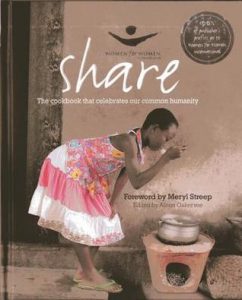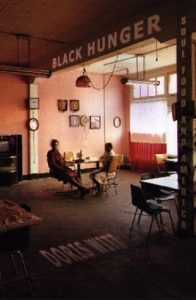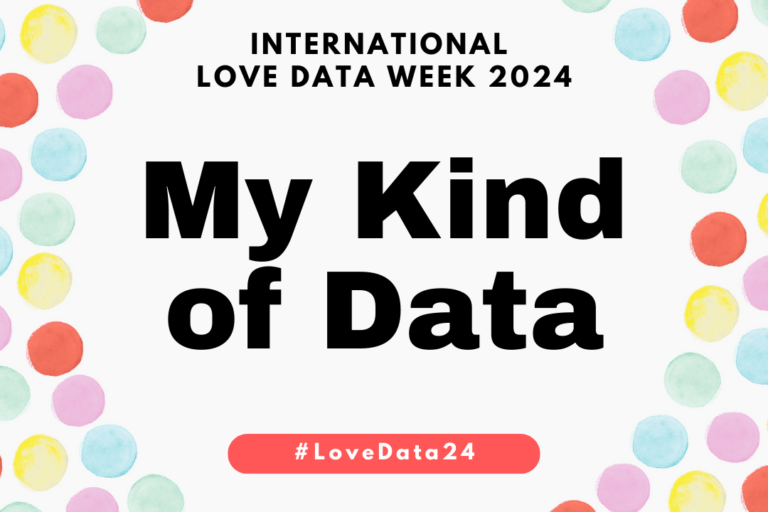Cooking by the Book
September is a month of many celebrations. National Chicken Month, National Mushroom Month, National Potato Month, National Rice Month…we started seeing a theme! Celebrate the month by trying some new recipes from the library’s cookbook collection.
American Cookbooks
The Smitten Kitchen Cookbook by Deb Perelman
The long-awaited cookbook by Deb Perelman of Smitten Kitchen—home cook, mom, photographer, and celebrated food blogger.
Deb Perelman loves to cook. It’s as simple as that. She isn’t a chef or a restaurant owner—she’s never even waitressed. Cooking in her tiny Manhattan kitchen was, at least at first, for special occasions—and, too often, an unnecessarily daunting venture. Deb found herself overwhelmed by the number of recipes available to her. Have you ever searched for the perfect birthday cake on Google? You’ll get more than three million results. How do you choose? Where do you start? What if you pick a recipe that’s downright bad?
So Deb founded her award-winning blog, smittenkitchen.com, on the premise that cooking should be a pleasure, and that the results of your labor can—and should be—delicious…every time. Deb is a firm believer that there are no bad cooks, just bad recipes. She has dedicated herself to finding the best of the best and adapting them for the everyday cook—the ones with little time to spare, little money to burn on unpronounceable ingredients, and little help in the kitchen. And now, with the same warmth, candor, and can-do spirit her blog is known for, Deb presents her first cookbook—more than 100 new recipes, plus a few favorites from her site, all gorgeously illustrated with hundreds of Deb’s beautiful color photographs.
The Smitten Kitchen Cookbook is all about approachable, uncompromised home cooking: stepped-up comfort foods, stewy dishes for windy winter afternoons, an apple cake that will answer all questions: “What should my new signature dessert be?” “What is always welcome at a potluck?” “What did Deb consume almost single-handedly a week after having a baby?” These are the recipes you bookmark and use so often they become your own; recipes you slip to a friend who wants to impress her new in-laws; and recipes with simple ingredients that yield amazing results in a minimum amount of time. Deb tells you how to host a brunch and still sleep in—plus what to make for it!—and the essential items you need for your own kitchen. From salads and slaws that make perfect side dishes (or a full meal) to savory tarts and pizzas; from Mushroom Bourguignon to Pancetta, White Bean and Swiss Chard Pot Pies; from Buttered Popcorn Cookies to Chocolate Hazelnut Layer Cake, Deb knows just the thing for a Tuesday night, or your most special occasion.
Molly on the Range: Recipes and Stories from An Unlikely Life on a Farm by Molly Yeh
In 2013, food blogger and classical musician Molly Yeh left Brooklyn to live on a farm on the North Dakota-Minnesota border, where her fiancé was a fifth-generation Norwegian-American sugar beet farmer. Like her award-winning blog My Name is Yeh, Molly on the Range chronicles her life through photos, more than 100 new recipes, and hilarious stories from life in the city and on the farm.
Molly’s story begins in the suburbs of Chicago in the 90s, when things like Lunchables and Dunkaroos were the objects of her affection; continues into her New York years, when Sunday mornings meant hangovers and bagels; and ends in her beloved new home, where she’s currently trying to master the art of the hotdish. Celebrating Molly’s Jewish/Chinese background with recipes for Asian Scotch Eggs and Scallion Pancake Challah Bread and her new hometown Scandinavian recipes for Cardamom Vanilla Cake and Marzipan Mandel Bread, Molly on the Range will delight everyone, from longtime readers to those discovering her glorious writing and recipes for the first time.
Biscuit Head: New Southern Biscuits, Breakfasts, and Brunch by Jason Roy and Carolyn Roy
Learn the secrets for making the best breakfast, lunch, and everything in between.
At Biscuit Head, people line up around the block for the pillowy Classic Cathead Biscuit, mile-high biscuit sandwiches, and addictive sides. Now you can impress your family and friends with the same recipes at home! Start by finding your favorite biscuits. In addition to the iconic classic, you’ll find the best Gluten-Free Biscuit ever, the crowd-pleasing Beer City Biscuit, and more. Then top them with a crazy good selection of gravies, preserves, honeys, and butters.
You can also go big and stack biscuit sandwiches like Mimosa Fried Chicken with Sweet Potato Chai Butter and Sriracha Slaw. If you’re skipping the meat, try the Fried Green Tomatoes with ChevreDressing, Collards Callaloo, Okra Hush Puppies, or Quinoa Scramble. For dessert – because brunch should always end with dessert – whip up Biscuit Donut Holes with Lemon Curd, Biscuit French Toast, or Chocolate Biscuit Bread Pudding. Whether you’re an adventurous eater or just after a picture-perfect brunch spread, Biscuit Head has what you crave.
 Everyday Bento: 50 Cute and Yummy Lunches to Go
Everyday Bento: 50 Cute and Yummy Lunches to Go
Wendy Thorpe Copley writes the popular bento blog Wendolonia, which takes the traditional Japanese concept of bento—a single meal packed at home in a reusable container—and Americanizes it. Using simple ingredients found in any grocery store, Wendy creates entertaining meals that are sure to delight even the most finicky eater. Some of the fun and easy bento creations here include:
Princess Bento
Rock and Roll Bento
Snowman Bento
Butterfly Bento
Farm Yard Animals Bento
Besides being great fun to look at, bento lunches are a healthy way to enjoy food while keeping portions in check. Freshly-prepared lunches packed in portable, reusable boxes are also kind to the environment and easy on the wallet—very important in today’s economy. Everyday Bento teaches you a few simple techniques to make creative lunches, all in a reasonable time-frame for busy working parents.
The 50 bento meals in this cookbook feature familiar foods with fun themes that will appeal to children and adults alike. Follow the easy step-by-step instructions to recreate each bento box, or mix and match different elements from the book to make your own unique creations. Make lunch fun again with Everyday Bento!
International Cookbooks
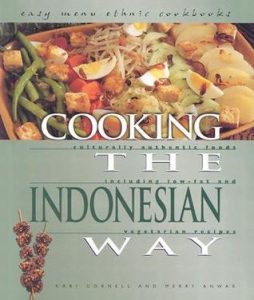 Cooking the Indonesian way : culturally authentic foods including low-fat and vegetarian recipes by Kari Cornell and Merry Anwar
Cooking the Indonesian way : culturally authentic foods including low-fat and vegetarian recipes by Kari Cornell and Merry Anwar
Cooking the Indonesian Way serves up tantalizing recipes for pork sate, gado-gado, fried bananas, and more. Seasoned liberally with vibrant, color photographs and easy, step-by-step directions, many of the recipes are low in fat and call for ingredients you may already have at home. Also included are vegetarian recipes, complete menu suggestions, and a cultural section highlighting the Indonesian people and their country, holidays, festivals — and, of course, their food. This book will show you how to treat yourself, your family, and your friends to delicious, authentic Indonesian meals.
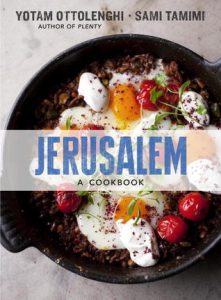 Jerusalem : a cookbook by Yotam Ottelenghi and Sami Tamimi
Jerusalem : a cookbook by Yotam Ottelenghi and Sami Tamimi
With Jerusalem, Ottolenghi re-teams with his friend and co-owner of his restaurants, Sami Tamimi. Both men were born in Jerusalem in the same year: Tamimi on the Arab east side and Ottolenghi in the Jewish west. In this book they explore the vibrant cuisine of their home city together, and present an authentic collection of recipes that reflects the city’s melting pot of Muslim, Jewish, Arab, Christian and Armenian communities.
From their unique cross-cultural perspectives, Ottolenghi and Tamimi share 120 authentic recipes: from soups (Frikkeh, Chicken with Kneidelach), to meat and fish (Chicken with Cardamom Rice; Sharmula Bream with Rose Petals), to vegetables and salads (Chargrilled Squash with Labneh and Pickled Walnut Salsa), pulses and grains (Beetroot and SaffronRice); and cakes and desserts (Fig and Arak Trifle; Clementine and Almond Cake). Their cookbook is illustrated with 130 full-colour photographs, showcasing their sumptuous dishes in the dazzling setting of Jerusalem city.
Ottolenghi and Tamimi have five bustling restaurants in London, UK. Ottolenghi is one of the most respected chefs in the world; his latest cookbook, Plenty, was a New York Times bestseller and one of the most lauded cookbooks of 2011. Jerusalem is his most personal, original and beautiful cookbook yet.
 Beyond curry : Indian cookbook : a culinary journey through India by Denise D’Silva Sankhe
Beyond curry : Indian cookbook : a culinary journey through India by Denise D’Silva Sankhe
Explore the Flavors of Indian Cooking with Mouth-Watering Recipes—From Authentic Regional Classics to Mainstream Fusion Favorites
Join Mumbai-based food blogger Denise D’silva Sankhé on a culinary adventure of nostalgia and tasty surprises spanning the regions of India. In Beyond Curry, An Indian Cookbook, Denise shares her rich personal story of Indian cooking with profiles of unique regional Indian food. You’ll explore Indian cooking with convenient, no-fuss recipes, accessible ingredients, and must-know secrets behind authentic Indian food. Discover delicacies from the North (Tandoori Chicken) to breakfast delights from the South (Dosas) to popular Indian-Chinese dishes, and much more.
Whether you long to recreate beloved childhood recipes, are a time-strapped professional, or a home cook new to Indian cooking, Beyond Curry, An Indian Cookbook guides you through a cuisine that is diverse, satisfying—and easy to create in your kitchen.
Share: The Cookbook that Celebrates Our Common Humanity edited by Alison Oakervee
The recipes in this uplifting book include healthy, everyday recipes, nutritious recipes for family meals, recipes for sharing, and recipes for celebrating. Contributed by women living in the war-torn countries in which Women for Women International operate, these recipes are also accompanied by dishes shared by internationally known chefs, humanitarians, and philanthropists.
Dishes range from authentic Afghani bichak pastries and Congolese sticky doughnuts to spicy cashew and tomato soup, Indonesian beef rendang, and orange-scented almond cake. Interspersed throughout are the inspiring stories from the women whose lives have been changed through the intervention of Women for Women International.
Food History
Chop Suey: A Cultural History of Chinese Food in the United States by Andrew Coe
In 1784, passengers on the ship Empress of China became the first Americans to land in China, and the first to eat Chinese food. Today there are over 40,000 Chinese restaurants across the United States–by far the most plentiful among all our ethnic eateries. Now, in Chop Suey Andrew Coe
provides the authoritative history of the American infatuation with Chinese food, telling its fascinating story for the first time.
It’s a tale that moves from curiosity to disgust and then desire. From China, Coe’s story travels to the American West, where Chinese immigrants drawn by the 1848 Gold Rush struggled against racism and culinary prejudice but still established restaurants and farms and imported an array of Asian
ingredients. He traces the Chinese migration to the East Coast, highlighting that crucial moment when New York Bohemians discovered Chinese cuisine–and for better or worse, chop suey. Along the way, Coe shows how the peasant food of an obscure part of China came to dominate Chinese-American
restaurants; unravels the truth of chop suey’s origins; reveals why American Jews fell in love with egg rolls and chow mein; shows how President Nixon’s 1972 trip to China opened our palates to a new range of cuisine; and explains why we still can’t get dishes like those served in Beijing or
Shanghai. The book also explores how American tastes have been shaped by our relationship with the outside world, and how we’ve relentlessly changed foreign foods to adapt to them our own deep-down conservative culinary preferences.
Andrew Coe’s Chop Suey: A Cultural History of Chinese Food in the United States is a fascinating tour of America’s centuries-long appetite for Chinese food. Always illuminating, often exploding long-held culinary myths, this book opens a new window into defining what is American cuisine.
Black Hunger focuses on debates over soul food since the 1960s to illuminate a complex web of political, economic, religious, sexual, and racial tensions between whites and blacks and within the black community itself. Doris Witt draws on vaudeville, literature, film, visual art, and cookbooks to explore how food has been used both to perpetuate and to challenge racial stereotypes.
What emerges from this deeply critical, at times humorous, foray into African American food history is a theoretical work as sensuous as the subject matter. Witt takes the reader on a journey through popular food discourses and along the way unpacks the signifiers of belonging, resistance, abjection, purity, and lust. Reading Black Hunger, I was reminded that food is not simply good to eat, it is also good to think with.
— American Anthropologist
An Edible History of Humanity by Tom Standage
Throughout history, food has acted as a catalyst of social change, political organization, geopolitical competition, industrial development, military conflict, and economic expansion. An Edible History of Humanity is a pithy, entertaining account of how a series of changes—caused, enabled, or influenced by food—has helped to shape and transform societies around the world.
The first civilizations were built on barley and wheat in the Near East, millet and rice in Asia, and corn and potatoes in the Americas. Why farming created a strictly ordered social hierarchy in contrast to the loose egalitarianism of hunter-gatherers is, as Tom Standage reveals, as interesting as the details of the complex cultures that emerged, eventually interconnected by commerce. Trade in exotic spices in particular spawned the age of exploration and the colonization of the New World.
Food’s influence over the course of history has been just as prevalent in modern times. In the late eighteenth century, Britain’s solution to food shortages was to industrialize and import food rather than grow it. Food helped to determine the outcome of wars: Napoleon’s rise and fall was intimately connected with his ability to feed his vast armies. In the twentieth century, Communist leaders employed food as an ideological weapon, resulting in the death by starvation of millions in the Soviet Union and China. And today the foods we choose in the supermarket connect us to global debates about trade, development, the environment, and the adoption of new technologies.
Encompassing many fields, from genetics and archaeology to anthropology and economics—and invoking food as a special form of technology—An Edible History of Humanity is a fully satisfying discourse on the sweep of human history.
 Grand Forks: A History of American Dining in 128 Reviews by Marilyn Hagerty
Grand Forks: A History of American Dining in 128 Reviews by Marilyn Hagerty
A legendary 86-year-old food critic brings together a collection of the best down-home, no-nonsense restaurant reviews-from Red Lobster to Le Bernadin-culled from her fifty year career
Writing for her local North Dakota newspaper, the Grand Forks Herald since 1957, Marilyn Hagerty went from obscurity to overnight sensation in 2012 when her earnest, admiring review of a local Olive Garden went viral. Among the denizens of the food world-obsessive gastronomes who celebrate Alice Waters and Michael Pollan, revere all things artisanal, and have made kale salad a staple on upscale urban menus-Hagerty’s review ignited a fiery debate over the state of American culture. Anthony Bourdain defended Hagerty as an authentic voice of the larger American culture-one that is not dictated by the biases of the food snobbery that define the coasts.
In this refreshing, unpretentious collection that includes more than 200 reviews culled from a voluminous archive spanning over fifty years, Hagerty reveals how most Americans experience the pleasure of eating out. Bourdain hails Grand Forks as, “a history of American dining-in the vast spaces between the jaded palates and professional snarkologists of the privileged coasts-as told by one hard working small city journalist. . . . We watch American dining change over time, in baby steps. Traditional regional Scandinavian giving way to big chains, first iterations of sushi, early efforts at hipster chic. Part Fargo, part Lake Woebegone. It’s the antidote to snark. This book kills cynics dead.”



